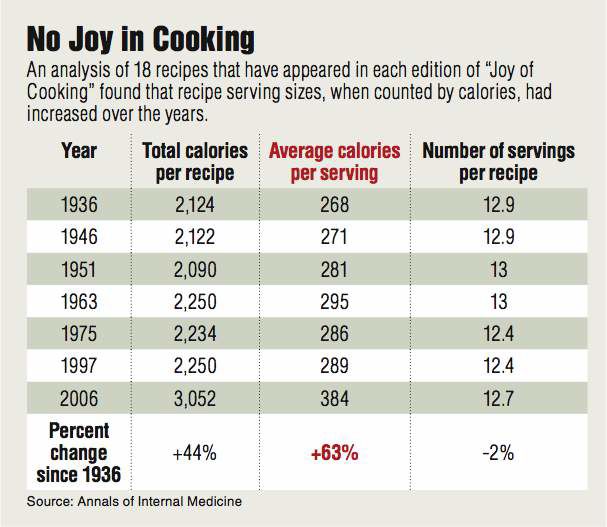Since 1931, ‘Joy of Cooking’ has been a staple in U.S. kitchens
Published 5:00 am Thursday, April 9, 2009

- Since 1931, ‘Joy of Cooking’ has been a staple in U.S. kitchens
Nutrition experts have attributed the nation’s obesity epidemic in part to the increasing portion sizes of restaurant and take-out foods. But a recent analysis suggests there might be a parallel or linked increase in portion sizes for home-cooked meals.
Brian Wansink, a marketing professor at Cornell University, and co-author Collin Payne of New Mexico State University-Las Cruces found the average calorie count per recipe in the iconic “Joy of Cooking” cookbook has jumped an average of 63 percent during the past 70 years.
The researchers looked at 18 recipes that have appeared in each of the versions of the cookbook published since 1936 to see how those recipes changed over seven editions of the book. The cookbook has been updated about once every seven years.
Although the number of servings per recipe remained relatively constant, the average number of calories per serving rose from 268 calories in 1936 to 384 calories in 2006. The growth reflected changes toward higher calorie ingredients, as well as somewhat larger servings.
“What served four people in 1986 would have served almost seven people by 1936 standards,” Wansink said.
The chicken gumbo recipe, for example, made 14 servings with 228 calories each in 1936. By 2006, the recipe made 10 servings at 576 calories each.
Since the 1936 edition, calories per serving went up for 17 of the 18 recipes. Only the chile con carne recipe stayed constant. Only three recipes decreased their serving sizes at any point during the past 70 years, and all three later made up the difference with subsequent increases.
“The calories and portion sizes of classic recipes may reflect prevailing tastes and norms,” the authors wrote in a description of the study published in the Annals of Internal Medicine. “Yet, they may also establish or reinforce exaggerated norms in other settings.”
Publishers of the cookbook posted a response to the study findings on the “Joy of Cooking” blog questioning whether any conclusion about portion sizes in the book could be drawn from only 18 recipes.
“Eighteen recipes, out of perhaps, 2,500 in 1936 and 4,000 in 2006?” wrote Anne Mendelson, who penned the history chapter for the 75th Anniversary Edition of the cookbook. “Anybody trying to draw conclusions from such a minuscule sample had better understand plenty about the infinitely variable details of cooking and serving food.”
Mendelson pointed to the example of the apparent increase in serving sizes for waffles, from 12 6-inch waffles in 1997 to about six waffles in 2006. The later edition, she said, explains that waffle sizes were based on a rectangular waffle iron divided into four 4-by-4½-inch sections.
Other studies have also found increases in recipe serving sizes.
In 2002, Lisa Young, a nutrition professor at New York University, looked at how portion sizes began to grow in the early 1980s as calories in the food supply increased from 3,200 to 3,900 per day per person. She found identical recipes in “Joy of Cooking” told readers to make 30 brownies in 1975 but only 16 brownies in 1997 out of the same amount of batter.
Young also found that between 1984 and 1987, the infamous chocolate chip cookie recipe on the back of the Nestle’s Toll House Semi-Sweet Chocolate Morsels package adjusted the number of cookies the recipe produces from 100 to 60.
The latest study looked only at how the recipe was written, not how cooks prepared it or how much of the suggested serving size people consumed. And experts maintain that restaurant and take-home meals still have even more outrageous calorie counts per serving.
But Wansink, author of “Mindless Eating,” a book about how visual cues and marketing often conspire to get us to overeat, suggested a strategy for limiting overconsumption: Take half of the meal and save it for later.






